Working a Major Broadcast Sports Event in the COVID Era
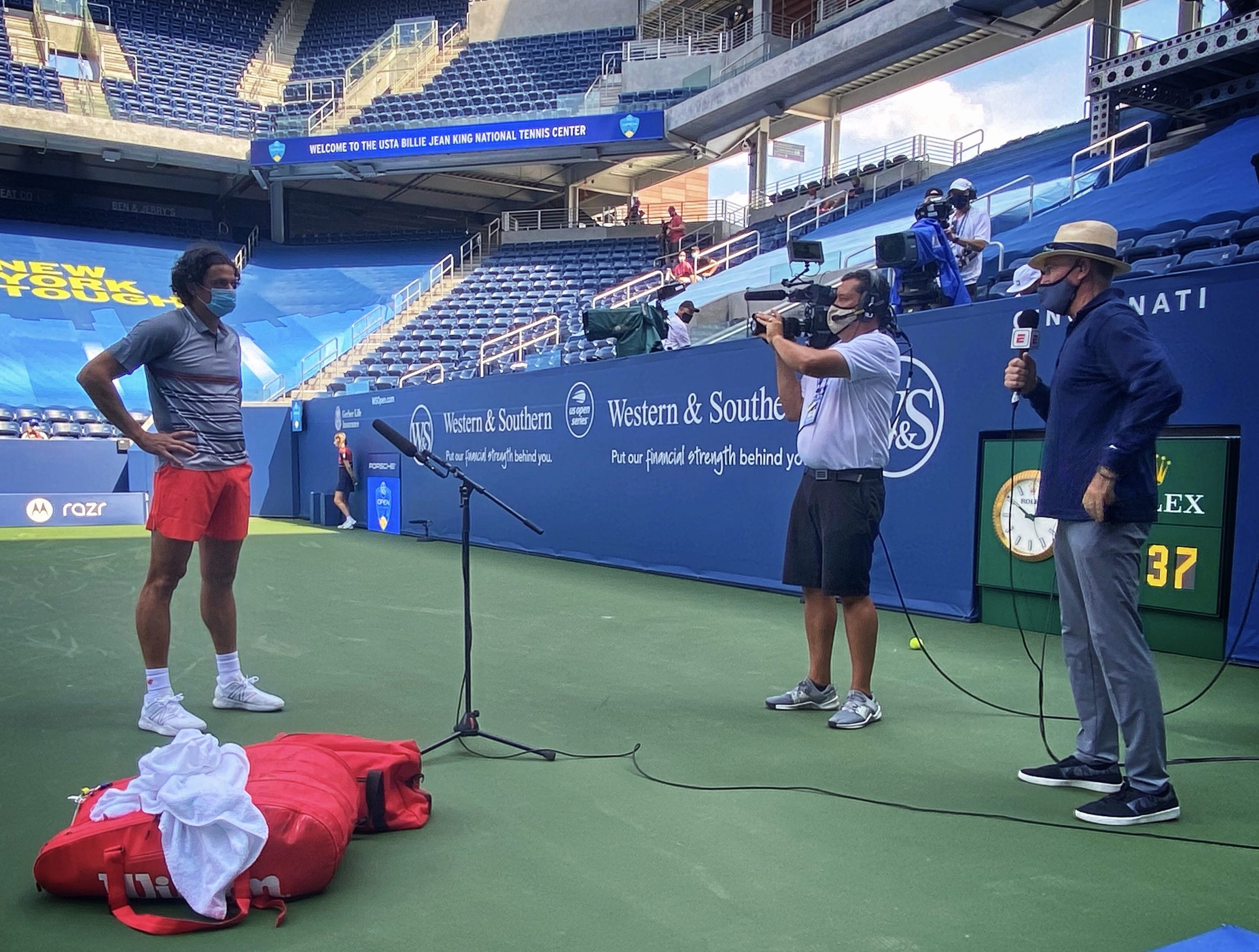
With my “day job” working as a Mobile Broadcast Technician, I was finally back to work after a stressful 5 months of no work (and wondering if I would ever return to it). I have worked this event in some aspect for what was my 16th year. This one would prove to be the most different and challenging.
The US Tennis Open – one of the biggest Grand Slam Tennis events of the season, and this year…..one of the few. It would happen without the millions of spectators that normally flock to Flushing Meadows, NY (Queens) each year. Because of COVID wreaking havoc with sports events all over the world, this venue would also host a second tournament. The Western & Southern Open, normally held in June in Cincinnati, will be held here prior to the Open. Also because of this, my mobile broadcast unit, along with myself and coworker as lead engineer, would spend a total of 28 days here this year.
“Over our time here, we have worked this event through a hurricane, an east coast earthquake, a solar eclipse, and now a worldwide pandemic.”
Let’s get into some of the unique challenges facing all broadcast sports events in this pandemic era.
TESTING: ONE, TWO: Over the four weeks, the 601 member production crew were tested for COVID a total of 6 times. Quick tests–morning test told you the result at days’ end. On top of that, to work each day, we all filled out an online form similar to if you have been to a doctor during this time, and get a daily temperature check. Every day.
Meal time was VERY different. Normally at this and other large scale events, the crew is fed catering/buffet style. This event would normally feature several food stations where you could choose salad, sandwiches, hot food, desserts. Then sit at a cafeteria style long table with your fellow crew members to eat together. Not this year. A sophisticated meal system that actually worked well considering the circumstances. Every day you would place an online order through a website for breakfast, lunch, dinner featuring a pre-selected menu. Three days in advance. Then when you enter catering, they take your name, mark a checklist on a paper, then someone behind plexiglass gives you your pre packaged meal in a paper bag. Three meals, every day. A few of us referred to it as the “Bag ‘O Food.”

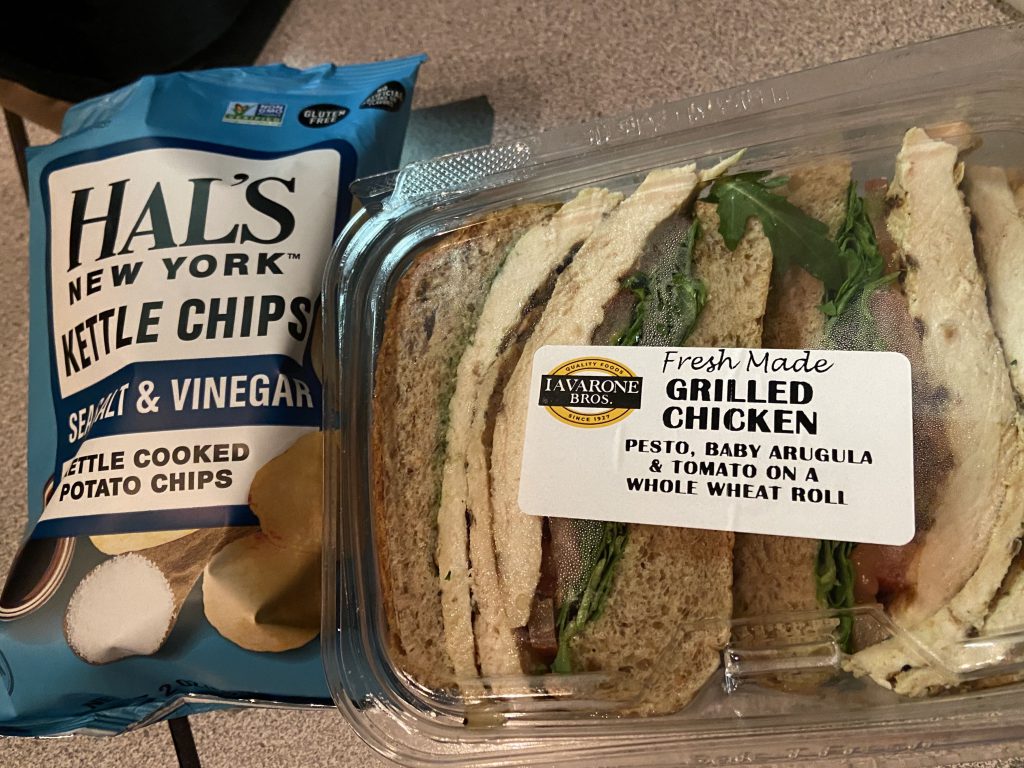
Also, no more long crowded cafeteria tables. We had single person high tops & tables—spread 6ft across of course. This system actually worked well to feed 600 people every day for a month, and be COVID compliant. Food was pretty decent quality, although selections not very different over the month.
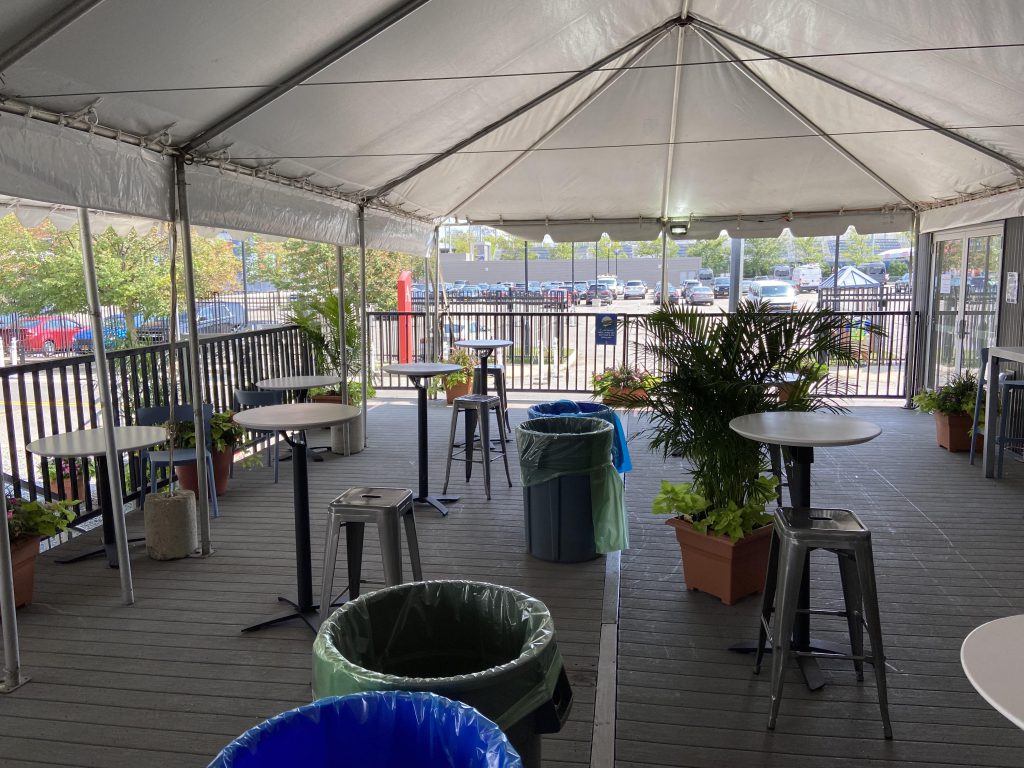
Producing this event in the COVID era also made for different challenges. Facilities are made up of control rooms built in buildings that also feature office space for lots of people. Some people spend 5-6 weeks here planning and working this event. There are also a few mobile TV trailers (mine among them). The challenge with control rooms is that people are normally packed close together—touching buttons and control surfaces together. Not a good thing to do currently. So, in the case of my truck, an outboard office trailer was employed to house the graphics people. In our main control room, those remaining were shifted around to assure proper social distancing. These folks will spend hours together. Also, masks are required by all–full time. Only when you ate or drank did you take it off. Honestly, I became used to wearing it after 12-14 hour days. I remember setting up the graphics office trailer using a tape measure to make sure we got that 6 foot distance.
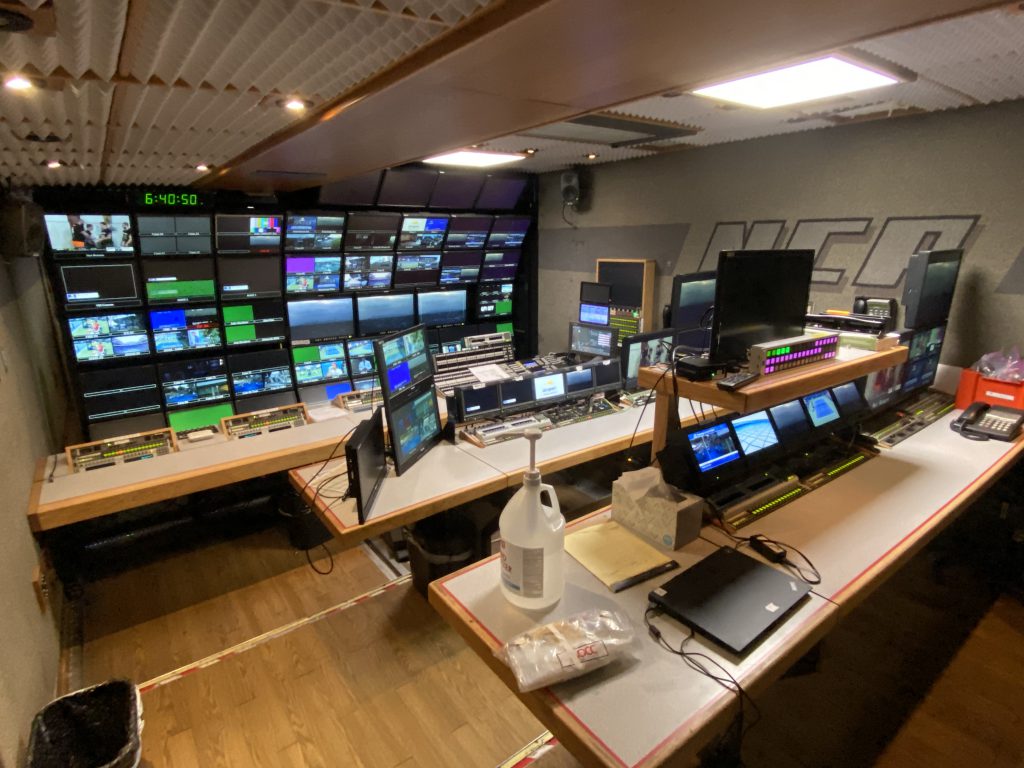
The Bubble
You’ve heard lots of talk about “the bubble” when referring to sports, but what is it? The Bubble means that you work and live in a mostly or completely closed environment where you are only exposed to people also in the same environment, who are tested regularly for COVID-19, and are deemed free from it. If you can’t contact anyone who may have it, and you yourself are tested negative, then the entire environment is essentially “COVID free.” At the US Open, we had what I would call a “Psuedo bubble.” Players and staff were all tested, as were the 601 broadcast workers. But we were not ordered to quarantine in our hotel to stay away from the public. In our case, not much around the hotels, and we all worked late. I was told players were under a strict bubble—they couldn’t venture to certain areas of the facilities, and were privately shuttle to their hotel, where they stayed isolated. THAT’s a bubble. However, all of us being tested every few days, and temp checked every day were good precautions. Still, even with all of this in place–10 broadcast crew people had to self quarantine and 2 players leave the tournament due to positive COVID tests. Fortunately, no major outbreaks, although we prepared for the worst.
I mentioned that everyone wore masks full time–that included on-air talent and even the players. When the players weren’t “playing,” they put their mask on. I had the opportunity to go courtside a few times during the Western & Southern Open. Eerie to be one of only 20 people in an arena that can hold thousands. I did get to capture some great pics:
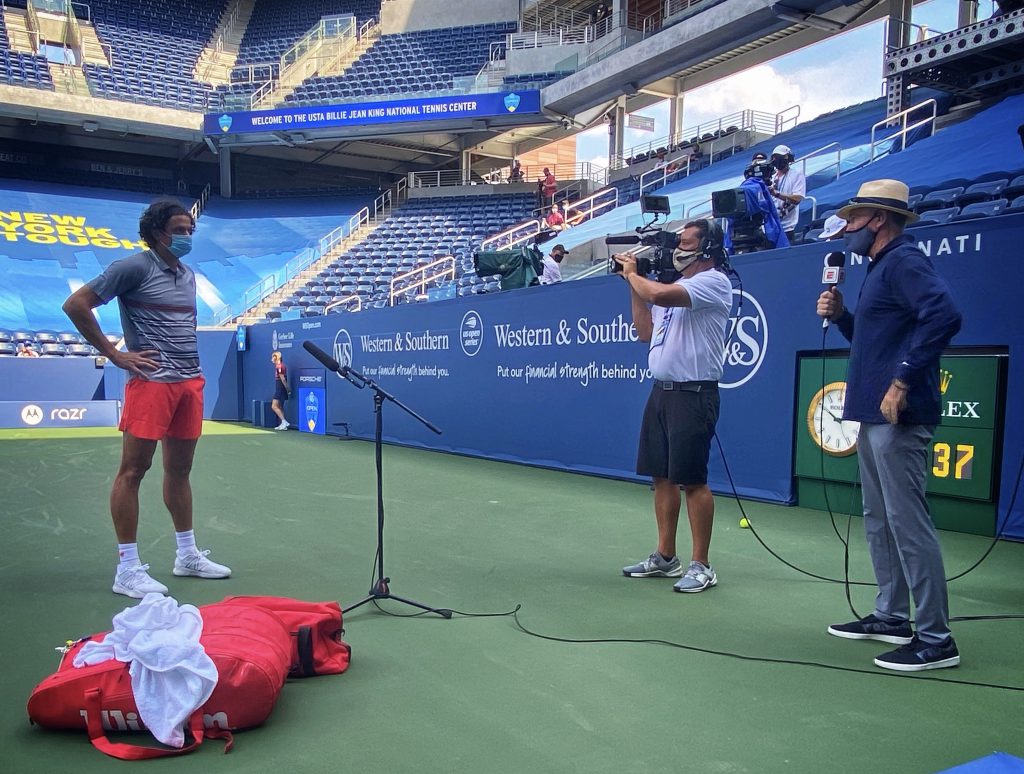
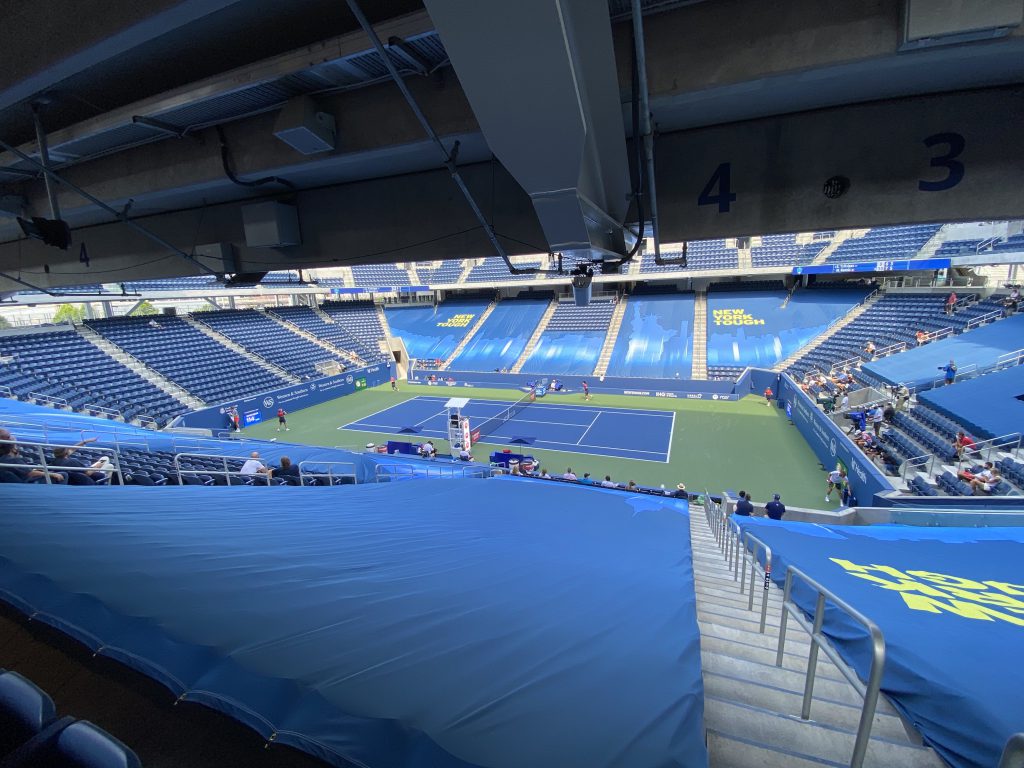
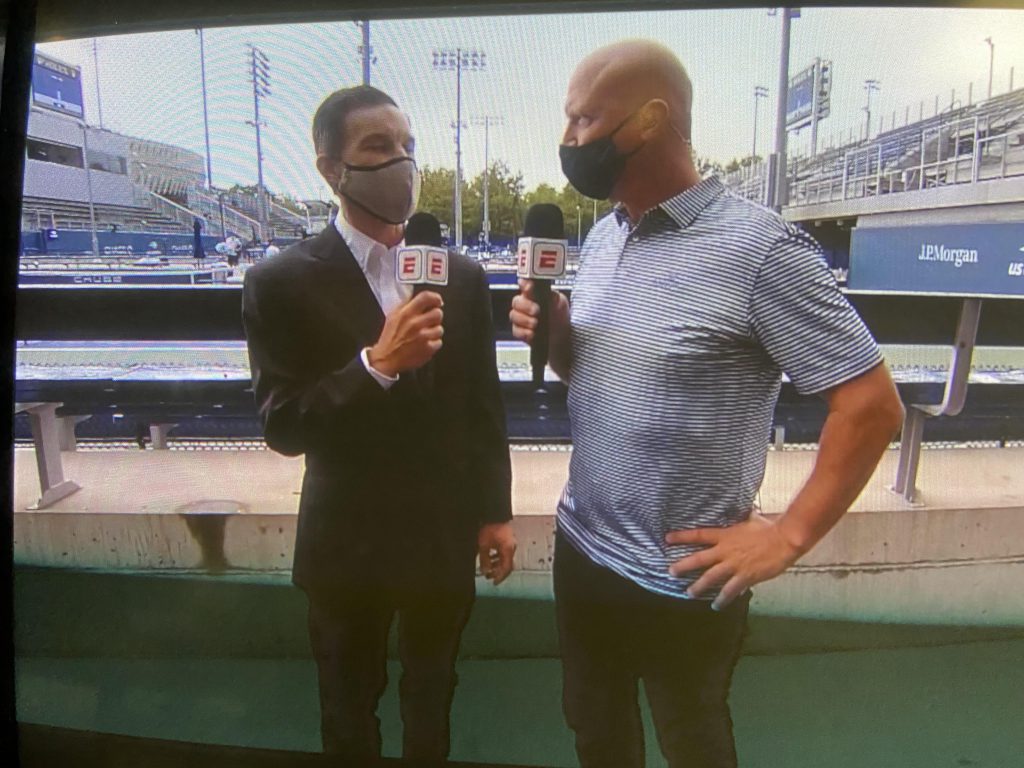
I mentioned about “preparing for the worst.” Yes….we did. My truck served several functions here. It was the control center for ESPN’s coverage of the Western & Southern Open (From Cincinnati, in New York). We also provided ESPN2 coverage for two nights in lieu of college football in their schedule. After that, we provided what’s called the DirecTV “Six box” feed where viewers can choose from several outer court matches during the early days of the tournament. That ends on Labor Day. In years past, we would pack up & leave, but this is no ordinary year. We spent our last week as a standby in case a control room had a COVID outbreak. If that happened, a new crew would come into our truck and would do the show from there. That scenario never happened, but had to be prepared for.
I know there are those that don’t take this COVID pandemic very seriously. All I can tell you is that I witnessed several big companies and groups spend TONS of money and resources to keep us COVID-free at this event. That says a lot to the seriousness.”
It’s not just clean……it’s “COVID clean.”
My phrase after one of my mobile truck cleanings–done every night, and the couple of times we switched crew during the day. My company provided us with COVID-rated cleaning materials, gloves, etc. ESPN also had their requirements. In the past, no one thought twice about grabbing any headset. Now—everyone has their own. Each night, I would clean the counters, light switches, stair railings, door handles, etc.

Crew were given, and instructed to put their own headset in a dedicated bag. They were responsible for their own workspace. In addition to that, ESPN provided a UV-C Light sanitizer box called “Nemesis.” Six minutes getting pounded by UV-C light, and equipment virus free. UV-C light is harmful to us, so precautions are in place to avoid direct exposure. This technique will most likely see a lot of applications moving forward.
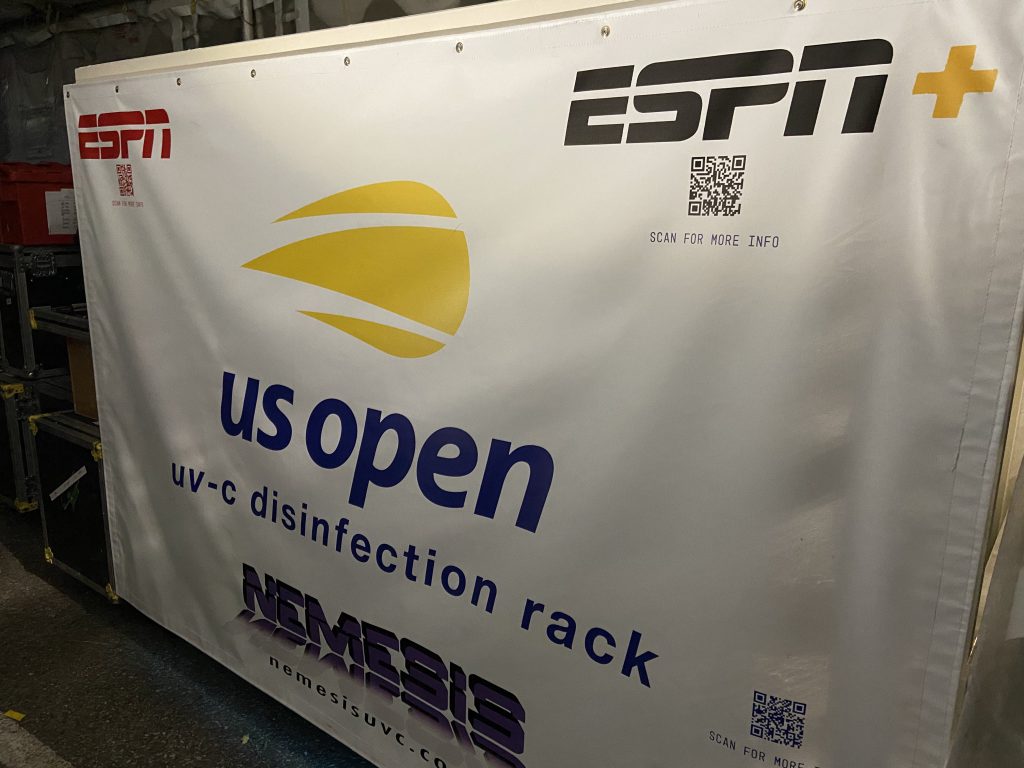
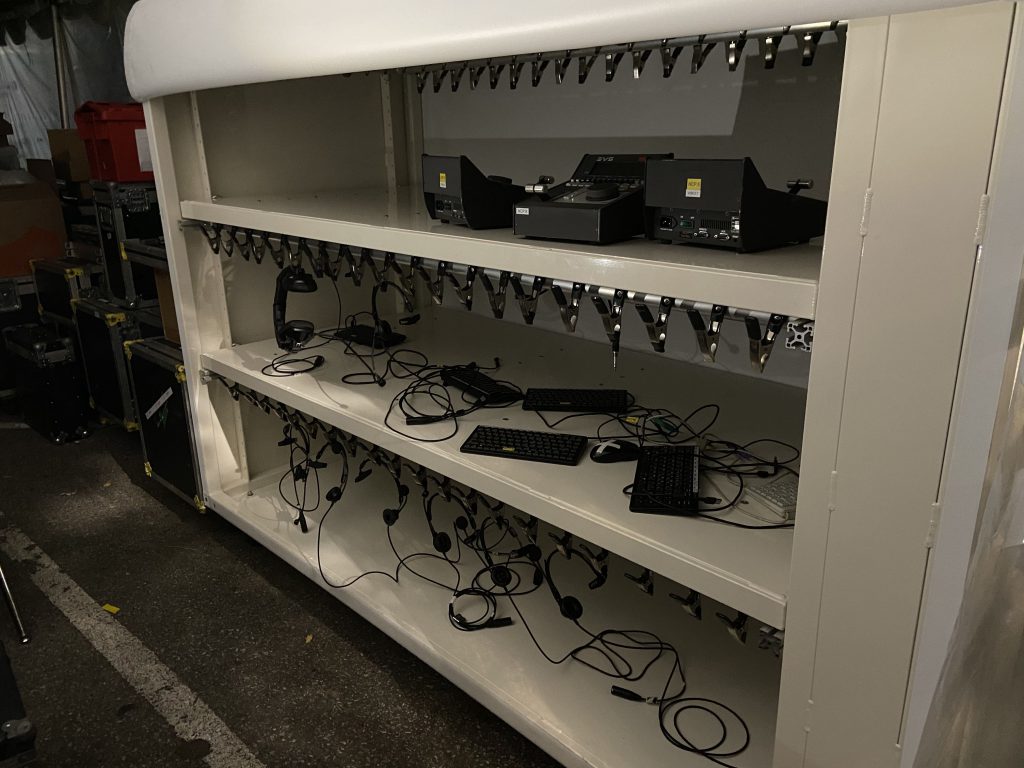
As our time ended, we were NOT needed as the “Disaster Recovery” as were were assigned to be, which is a good testament to how the event went in these strange times. Ultimately, it was a big success!
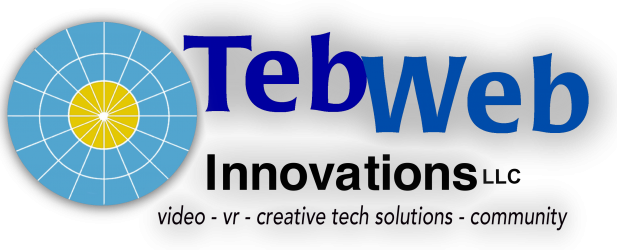
You must be logged in to post a comment.